The eggplant, or aubergine, or brinjal, is a type of nightshade that belongs to the Solanaceae family. Fruit from the Solanum melongena tree is grown as a food crop worldwide. The purple, spongy, absorbent fruit is used in various dishes. Botanically defined, it is a berry, despite its everyday use as a vegetable in food.
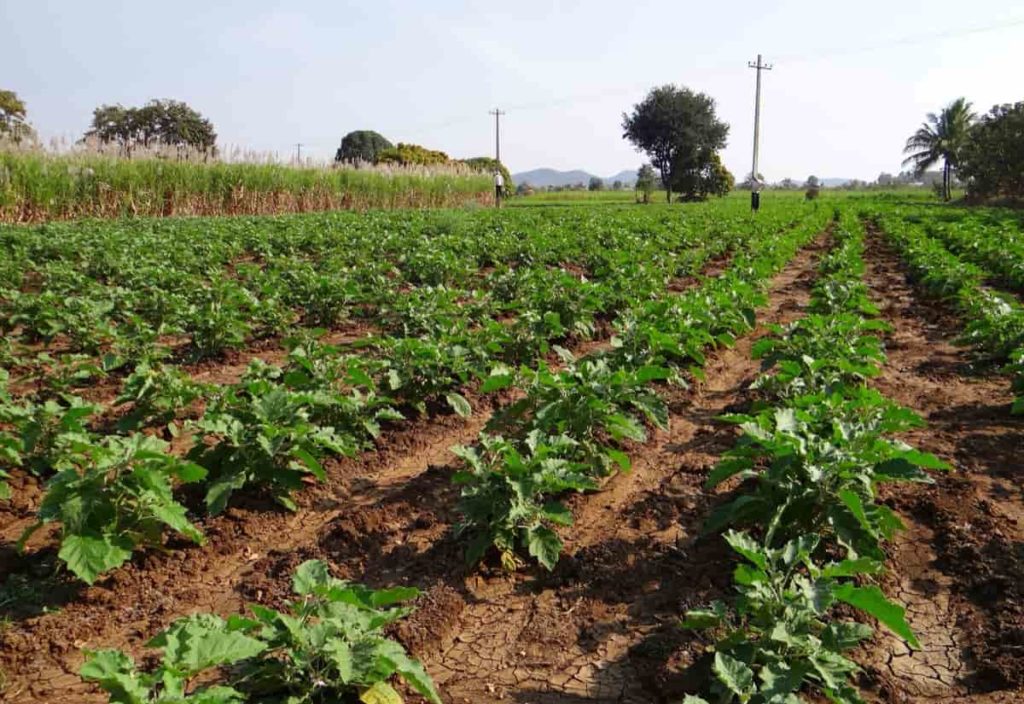
The tomato, chili pepper, and potato are all members of the same genus, Solanum, but they are native to the New World, whereas eggplant is native to the Old. The skin and seeds are edible, like a tomato, but it is typically cooked before being consumed, like a potato. While the macro and micronutrient content of eggplant are minimal, its capacity to absorb oils and flavors when cooking increases the fruit’s use in the kitchen.
The eggplant is a sensitive perennial plant native to the tropics that is grown as a tender or half-hardy annual in more moderate regions. Stems of this plant are generally spiny. The flowers can be white, purple, or any shade in between, and they all share a similar five-lobed corolla with bright yellow stamens. Fruit of certain common varieties is egg-shaped, shiny, and purple; the flesh is white and spongy, and it has a “meaty” quality. Some varieties are white and longer in form. When its fruit is cut open, the exposed flesh quickly turns brown due to oxidation.
The mature height of an eggplant plant can range from 40 to 150 cm, and it’s large, coarsely lobed leaves can measure from 10 to 20 cm in length and 5 to 10 cm in width. Large, semiwild varieties can attain heights of 225 cm, and their leaves can measure more than 30 cm in length and 15 cm in width. The fruit of wild plants is typically smaller than 3 cm in diameter, but those of cultivated varieties can grow to be 30 cm or longer.
How to start Eggplant/Brinjal farming in Malaysia
The top eggplant-producing regions in Malaysia
Statistics from the Malaysian Ministry of Agriculture show that Pahang (331 ha), Johor (200 ha), Sarawak (188 ha), and Terengganu (132 ha) are the most prolific regions for eggplant cultivation in Malaysia. Producing regions in Malaysia had 1,540 hectares of eggplant cultivation in 2015, with an estimated 25,950 metric tons of yield worth RM 51.8 million.
Varieties of eggplants in Malaysia
In Malaysia, you can find both terung telunjuk and terung rapuh eggplants. Despite its usefulness, most people mainly use eggplant for Ulam and the occasional curry. Terung rapuh is a tall, spherical plant that can reach heights of 1 meter. The fruit is significantly smaller than the standard round eggplant available in stores, which typically measures 3 cm in diameter. The fruit has a deep purple color. Additionally, terung telunjuk can attain heights of 1 meter and bear fruit that is 12 centimeters in length. When it is fully ripe, the fruit takes on a green color.
In case you missed it: Top 47 Home Garden Ideas for Small Spaces: Check How this Helps Beginners
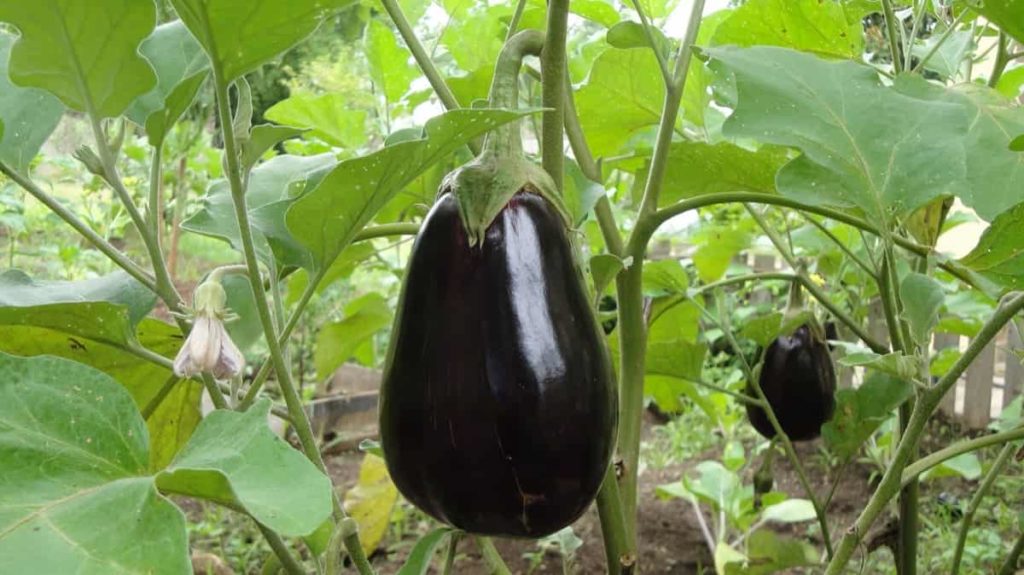
Best season for eggplant cultivation in Malaysia
In Malaysia, there is no “off-season” for growing eggplant because the crop may be cultivated year-round as long as the land is fertile, has mild weather, and adequate ventilation. You can start harvesting your eggplant crops after only two or three weeks from planting. 6 to 8 weeks before the latest spring frost date, start seedlings indoors in boxes or peat pots. Seeds germinate most quickly in soil conditions between 70 to 90 degrees Fahrenheit (21 and 32 degrees Celsius).
You can also wait until right before planting to purchase 6- to 8-week-old nursery transplants. To plant eggplant seedlings outside, wait until the threat of frost has passed. Then, if you need a transplant, spend your money on a good seedling. Do not buy plants that are too tall or droopy or plants that are too young to bear flowers. Flowering shouldn’t be a priority for young plants until they have appropriately stabilized.
Seed germination process for eggplant
Given that eggplants need a warm environment, it’s best to start the seedlings indoors and transfer them to the garden once the ground has warmed up. The seeds should be germinated roughly 6-9 weeks before the last frost is expected to occur. Replanting eggplants outside requires a temperature of at least 70 degrees Fahrenheit (21 degrees Celsius). The alternative to this preparation method is to buy eggplant seedlings from a garden center or nursery.
For best results, soak the seeds in water for a whole night before planting. Pre-soaking eggplant seeds improve their viability, increasing the likelihood of germination. The seeds should be soaked until they reach the top of the container. After a night of soaking, the seeds should be drained. Trays with 72 or 128 cells are ideal for starting eggplant seeds because their spacious seed containers encourage healthy root development.
Find seed planting trays at any gardening store or online. To plant seeds, use a fine, aerated, loose growing media and fill seed trays. When starting eggplant seeds, using a soilless growing media is ideal. The ideal amount of growing material to use when planting seeds is three-quarters full of the tray. Options include vermiculite, perlite, coconut husk, and compost. Sprinkle some water over the soil and plant the seeds about 0.25 inches (0.64 cm) deep.
Use your fingers to place a couple of eggplant seeds into the soil or compost in each seed tray. Place the seeds about 0.64 centimeters (0.25 inches) below the surface of the growing medium. Water the seeds by misting or sprinkling them. Plant seeds and wait 5-14 days for them to sprout. Depending on the climate, eggplant seeds can germinate in as little as five days and grow into mature plants in as long as two weeks.
A shorter germination time is a direct result of higher temperatures. While your eggplant seeds are germinating, try to keep them at a temperature of at least 65 °F (18 °C). The seedlings should be moved to separate pots once they reach 3 inches (7.6 cm). All of the seedlings should be transplanted to their own pots as soon as they reach a specific size.
Dig tiny holes in the soil and fill the pots with the same growing medium you used to start the seeds. Carefully take each seedling out of its tray and replant it in its new container. Pot seedlings need to stay inside until the external temperature reaches at least 70 degrees Fahrenheit (21 degrees Celsius).
Soil preparation for eggplant cultivation in Malaysia
Get some sun on your farm by finding a spot that stays sunny all day. Growing eggplants successfully on a farm requires exceptionally high temperatures. If possible, put your eggplants in a location where they will receive direct sunlight for at least six hours daily. If no other option exists, eggplants will still thrive in partial shade. If you want to cultivate eggplant successfully, you should do so in nutrient-rich, well-drained soil.
Determine whether or not the soil in your field drains well by doing a test. Dig a hole that’s 12-18 inches (30-46 cm) deep and 12-18 inches (30-46 cm) broad, then fill it with water to see how the water drains out. As an outcome, you can estimate the state of the soil. Water that collects and doesn’t drain away within an hour indicates that your soil isn’t well-drained.
Add an organic soil amendment to fix the drainage issues on your farm. Loosen the top 8 inches (or 20 centimeters) of soil with a gardening rake. Distribute an organic soil amendment in a layer 2 inches (5.1 centimeters) thick over the soil. Rake it into the ground so that it is equally distributed.
In case you missed it: How to Start Cucumber Farming/Growing in Philippines: Check How this Guide Helps Beginners
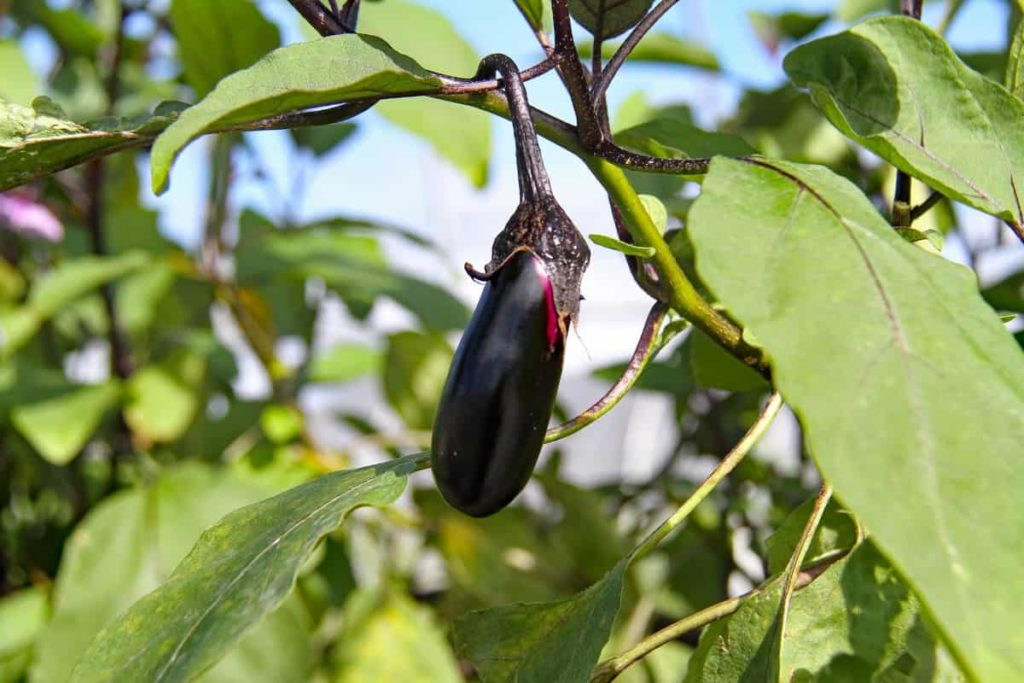
Spacing of the eggplants for productivity
You should dig a hole 24 to 30 inches (61 to 76 cm) deep to plant seedlings. When given ample space, eggplants flourish. Prepare planting areas by excavating holes slightly larger than the roots of your seedlings and spacing them out 24 to 30 inches (61 to 76 cm) in all directions. Plant the seeds carefully in the holes, and then backfill around their roots.
Mulching
Create a protective barrier for your plants’ roots by spreading mulch around their bases. You can keep your plants warmer and reduce the number of weeds you have to deal with if you mulch around them. Natural mulch materials like straw, compost, and grass clippings are all viable options. Spread them out in a thick coating over the stems and roots of your eggplant seedlings. Only use grass clippings from untreated lawns to avoid harming your plants with chemicals and fertilizers. You should use a mulch layer of at least 1 inch (2.5 cm) to shield your plants from the elements.
Staking your eggplant with sticks
Make sure your plants are firmly supported by stakes as they grow. Support your plants with bamboo canes or other suitable stakes. Set each stake into the ground approximately a finger’s width (2.5-5.1 cm) from the base of a seedling. Plants can lean on the stakes as they grow without damaging other plants nearby. Avoid disturbing the soil by inserting the supports immediately after transplanting your seedlings.
Irrigation or water management
Variations in climate and soil can significantly alter water needs. In general, soils rich in clay typically require less water for irrigation than soils rich in the sand. Not only that, but we might not need any watering at all on days when it rains or when the humidity is really high. Contrarily, on a hot, dry day, you may need to water your plants more than once. Also, the water needed by one type of eggplant can vary significantly from the needs of another.
From pollination until fruit set, plants typically need more water than at any other time. During the first two weeks of growth, many growers irrigate their eggplants by giving each plant 1 liter of water every two to three days. Since the plant requires more water than usual throughout the fruit-setting stages and when temperatures rise sharply (over 35 C or 95 F), irrigation sessions are extended at these times.
At this point in time, farmers water the eggplants once a day, sometimes twice a day, depending on the weather. When the weather forecast calls for cloudy skies, farmers water their eggplants first thing in the morning. The practice of watering plants has been connected to the spread of several diseases.
Humidity levels above normal may promote the spread of illness, especially on plants’ leaves. Conversely, plants that are water-deprived are more likely to become infected. Drip irrigation has become the standard method of watering eggplant crops. The standard spacing for drips on a strip is 20 cm (7.8 inches), and most manufacturers employ double or single strips.
Pruning of eggplants for productivity
Gently pinch the developing flower buds to encourage further growth. It would be best if you pinched off the buds as soon as you detect them appearing on your eggplant plant. Pinch the buds with your fingertips, where they join the plant’s stem. By doing this, you’ll train your plant to prioritize establishing solid stalks and roots over generating fresh fruit in the future. In a matter of weeks, new flowers will appear, and your plant will be stronger than before, allowing it to support massive, healthy fruits.
Strip the bottom parts of the plant of its dead leaves. If you want better fruit, later on, you should prune the lowest leaves off of your plant as it grows. Pick the leaves directly beneath the flowering parts and pinch them off, cutting them as near to the stem as you can with your fingers or a pair of pruning scissors. Regular pruning allows more sunlight and oxygen to reach plant growth, promoting health and development.
All fresh blossoms should be pinched off about four weeks before the first frost. By removing the plant’s flowers just before winter, you can push it to focus on ripening its current crop rather than producing more flowers. Pinch off fresh buds by hand or trim them with garden shears just below the base. In order to maintain its perennial status, cut it back to the ground just before winter.
Please cut down your plant to its lowest point of new growth in the fall, before the temperature drops and the first frost forms. Both the outside and the inside of the new growth should be green. To accomplish this, you must pick all of the remaining fruit. Then, chop off everything on your plant that is taller than 2 inches using pruning shears.
Weeding for productivity
Remove any unwanted plants from the soil as soon as possible. During the early stages of their growth, weeds can readily outcompete slower-growing eggplants. For the protection of your plants’ well-being, pull up any weeds as soon as you see them. Don’t just pull up the weeds by their leaves; dig down to the roots as well.
It may be possible for the plant to recover if only the top is cut off. An herbicide could be used if weeds become a significant issue. The specific product you’ll need depends on the type of eggplant you’re producing and whether or not you plan to consume the products of your effort. Inquire at a nursery or garden center near you for advice.
Fertilizer management
Before applying any fertilization, you must first consider the soil condition of your field by doing semiannual or annual soil testing. “Fertigation” is the most conventional fertilization technique for eggplant cultivation. Inside the drip irrigation system, farmers inject water-soluble nutrients. In that manner, the plant has time to absorb the nutrients when they are gradually appropriately added.
In case you missed it: How to Start Tomato Farming in Philippines: A Useful Growing Guide for Tomato Farmers
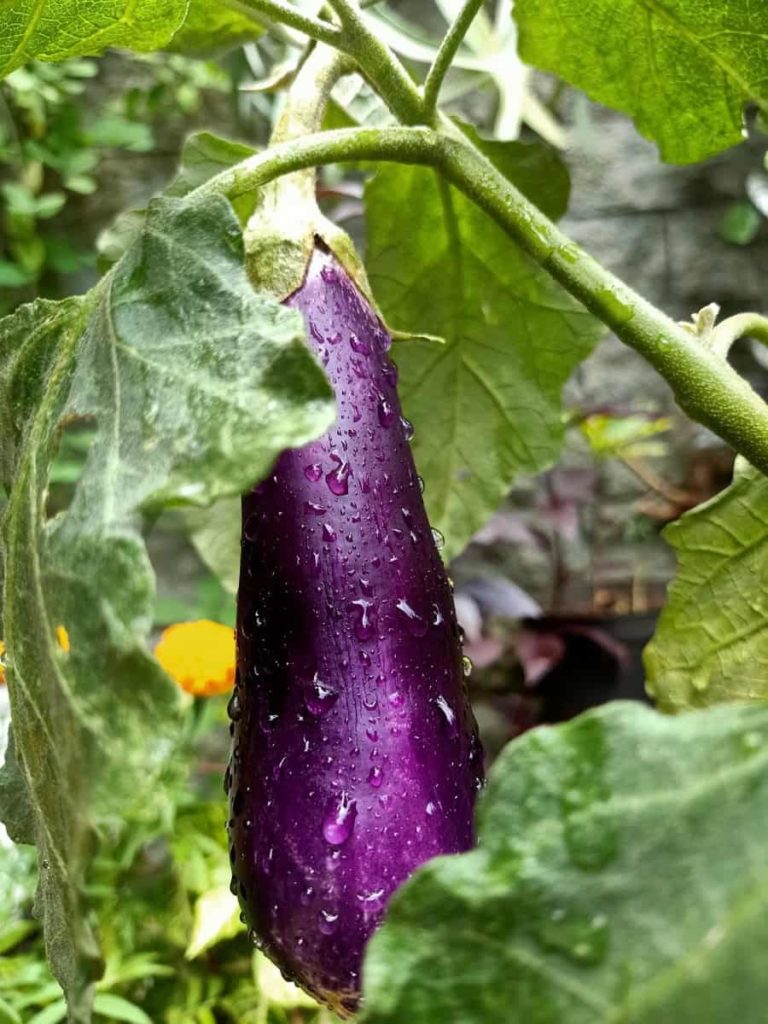
Regarding fertilizers, today’s farmers apply anywhere from zero to ten applications between planting and harvesting. In the two months before planting, many farmers spread well-rotted manure along the rows. In addition, high-Phosphorus pre-planting fertilization is applied around a week before planting, and fertigation begins around ten days following planting. At this stage, a fertilizer rich in nitrogen, phosphorus, potassium, and trace elements is applied (micronutrients).
Phosphorus helps plants establish a sturdy root system when it is present in high concentrations early in growth. Micronutrients boost a plant’s ability to recover from transplanting-related stress.Urea, potassium nitrate, and ethylenediamine-N (EDDHA) is other typical fertigation routine for eggplant. Urea is injected into the irrigation system between two and four weeks before transplanting, potassium nitrate is injected between six and twelve weeks after transplanting, and EDDHA is given continuously up until the moment of harvest.
However, they are only examples of familiar patterns, and you should not rely on them without doing your own research. Every field is distinct and has specific requirements. Before applying any fertilizer treatment, it is crucial to check the soil condition and pH value. Get in touch with a certified agronomic in your area for advice.
Pest and disease management
Regarding pests and diseases, eggplants have many of the same problems as other solanaceous plants like tomatoes, peppers, and potatoes. This makes it inappropriate for planting in areas occupied by similar species in the past. But since eggplants are especially vulnerable to pests like whiteflies, they are sometimes grown with plants that aren’t as vulnerable, like chili pepper, as a “sacrificial trap crop.” Separating eggplant harvests by at least four years helps keep insect populations in check.
Potato beetles, flea beetles, aphids, whiteflies, and spider mites are common eggplant pests. The most damaging type of fungus is called Verticillium, and it can only be stopped by using proper sanitation and crop rotation procedures. As an oligophagous insect, the potato tuber moth mostly consumes plants in the Solanaceae family, including potatoes, tomatoes, and eggplants.
Larvae of the potato tuber moth feed on the mesophyll of leaves after hatching from eggs laid by adult females. You should get rid of the leaves and flowers if they have any signs of being eaten by pests. Eggplants are susceptible to a wide variety of pests, including insects and fungi, so regular inspections for damage are essential.
Protect your eggplants with row covers. Protecting eggplants from frost, illness, and insects is much easier with the help of row covers. Plants can be shielded from the elements by using row covers, which are long strips of mesh material. Cover your eggplant rows with row covers, making sure to tuck in the ends on both ends. To keep the material in place, drive garden pegs into the folded edges using a rubber mallet.
Harvesting
About 16 weeks after planting, you should begin monitoring your eggplants. Eggplants need 16-24 weeks to reach harvestable size. If you’re growing eggplants, check on them every day or two to make sure they don’t get too ripe and bitter. When realizing that eggplant is ready for harvesting, go ahead and pick it. Waiting a few days may cause it to develop a bitter taste. Look for eggplants with shiny, smooth skin.
The eggplant is ready to be picked when its skin is shiny and smooth. The surface of the plant must be smooth and free of creases. There is a wide range of eggplant colors available. Look up the perfect ripeness color to expect with yours. It could be a solid white, a striped white and purple, or a dark purple. On the one hand, bring the eggplant to a standing position. It would be best if you used your non-dominant hand to hold the eggplant. Shift it such that the stem extending from the top is within easy reach. If you lift it up just a bit, you can reach the stem.
In case you missed it: Ohio Vegetable Planting Calendar: Month-by-Month Chart, Season, and Easiest Vegetables to Grow
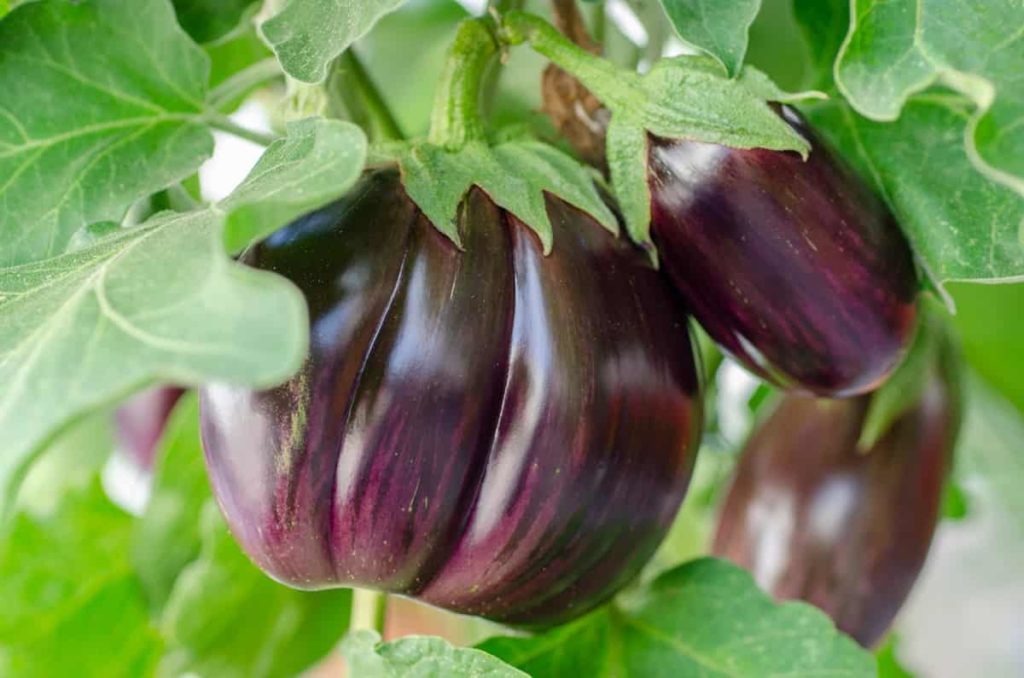
The eggplant should be trimmed near the stem. To prune or cut with precision, use sharp tools. Keep the eggplant stem in place, ideally no less than 1 inch (2.5 cm) from the base. It’s essential to have a sharp knife or shear for cutting through the thick, fibrous stems. Please do not attempt to remove the eggplant by trying to twist or pull it off with your bare hands. The plant could be harmed if you try to do that. Eggplants are stored at roughly 10 degrees Celsius to prevent them from losing weight.
Yield
Between 2005 and 2010, Malaysia’s eggplant output rose from 22.637 metric tons to 23.290 metric tons. As a nation, Malaysia has a relatively small eggplant production area compared to others, yet the demand for eggplant is rising.
Eggplant yield per hectare in Malaysia
After many harvests, a decent yield is between 25 to 40 tons per hectare. In other instances, farmers have gathered as much as 60 tons per hectare. Naturally, only under particular circumstances, like intensive farming and a wealth of knowledge, can such high yields be obtained.
Best fertilizers for the eggplant cultivation
Farmers can learn how much nitrogen, phosphorous, and potassium should be added to their soil by doing an NPK analysis, which is provided by a soil test. Chlorophyll and other plant greens require nitrogen for proper growth and development. Phosphorus is essential in the development of new roots and is also utilized in the creation of flowers, fruits, and seeds. Potassium helps with growth, disease resistance, and overall stem health. When fertilizing eggplant, a 10-10-10 ratio is commonly suggested. When nitrogen is overfed at any stage, the plants grow big and green but fail to set fruit.
How to keep the eggplant healthy
In order to keep eggplants healthy, you need to water them firmly once a week. Watering eggplant plants weekly with at least 1 inch (2.5 cm) is essential for their growth. Instead of many brief watering sessions, focus on giving your plants one weekly hydration. It’s possible that if you water your eggplants frequently, plants will develop shallow roots, and you will have a shorter harvest.
Flea beetles can cause damage to plants, so if you notice any on the leaves, get rid of them. Flea beetles are little, black insects that can cause damage to eggplant plants by munching on the leaves. You should remove harmful pests by hand if you see them on your eggplants. Remove any traces of the pests so they can’t come back or breed.
Best kind of soil for the eggplant cultivation
The ideal soil conditions for growing eggplant are sandy loam or loam soil with a moderate amount of organic matter. About a week before planting, work 1 inch of well-rotted manure, compost, or a general fertilizer like 5-10-5 into the entire planting bed to boost soil fertility. Growth is maximized at soil pH levels between 5.8 and 6.5. If you want to cultivate eggplant successfully, you should do so in nutrient-rich, well-drained soil.
In case you missed it: How to Start Home Gardening in Asia: For Indoors, Outdoors, Raised Beds, Backyards, Terrace, Pots, and In Containers for Beginners
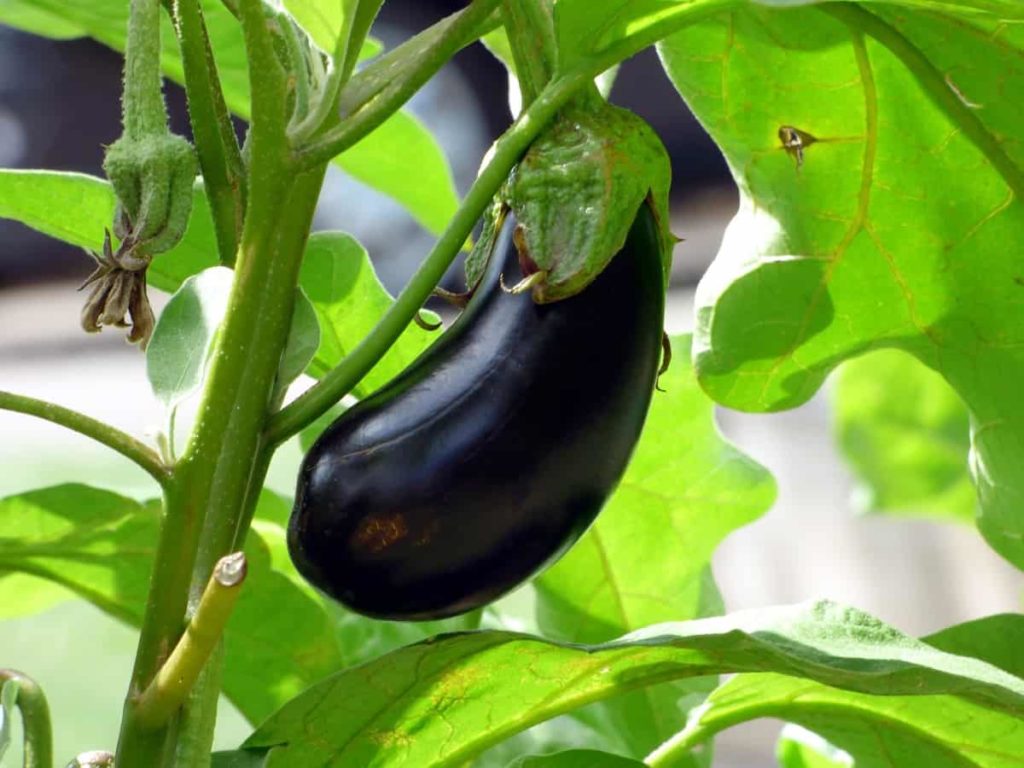
Conclusion
Although Malaysia’s production regions for eggplant are small compared to those of other countries, domestic demand is rising. Malaysia, a developing nation, requires constant rigorous research on vegetable crops like eggplant. It only makes a fourth of what is needed in the business sector. When domestic production falls short of meeting consumer demand, as has happened in Malaysia, a country’s food supply system becomes dependent on foreign imports of fresh fruit and vegetables.
Meanwhile, understanding the genetics of eggplant is crucial for developing better growing practices. Growing eggplants outdoors can be a profitable business if done in a sensible, scalable manner. Eggplant, in brief, is a perennial plant that is typically treated as an annual by growers.
- Aquaponic Farming at Home: A Step-By-Step Guide
- Profitable Village Farming Business Ideas in 2024
- High-Yield Aquaculture: Fast-Growing Fish for Farming
- Effective Fish Pond Construction Techniques for Beginners
- Irrigation and Water Management in Pineapple Farming
- Blossom to Harvest: Mastering Flowering and Pollination in Papaya Farming
- Pig Fattening Essentials: From Selection to Sale for Beginners
- Raising Wagyu Cattle: A Complete Guide for Premium Beef Production
- Soil Types and Their Water Holding Capacity
- Optimizing Irrigation Schedules for Coconut Groves for Enhanced Yield
- Espresso Your Garden: Coffee Grounds for Healthier Acid-Loving Plants
- The Best Soil Mix for Snake Plants: How to Mix Your Own Snake Plant Soil
- Green Thumb Success: Expert Tips for Cultivating Greenhouse Beans All Year Round
- Bloom All Year Round: The Ultimate Guide to Indoor Hyacinth Care
- Eco-Friendly Gardening: How to Make Liquid Fertilizer from Kitchen Waste
- Ultimate Guide to Grow Anise in Pots: Explore Seed Propagation to Harvesting
- Guide to Raising Chester White Pigs: Discover Breed Facts to Growth Management
- Mastering the Elegance: The Ultimate Guide to Weeping Cherry Tree Care, Planting, and Maintenance
- Ultimate Guide to Planting Garlic in Grow Bags: Growing Strategies for Beginners
- How to Fix Spider Plant Leaf-Related Problems: Natural and Organic Remedies
- 10 Reasons Why Your Tulsi Plant is Shedding Leaves: Home Remedies and Solutions
- Optimizing Growth and Yield: The Advantages of Palm Bunch Ash Fertilizer
- Utilizing Neem Oil Extract as a Natural Pesticide for Hydrangea
- From Soil to Harvest: Various Ways in Which Farmers Can Use AI Tools
- Steps to Encourage and Induce Citrus Flowers: A Comprehensive Guide
- How to Fix Snake Plant Leaf-Related Issues: Natural and Organic Remedies
- Transform Your Garden into a Fragrant Oasis with Raat Ki Rani (Night Blooming Jasmine)
- Discover the Ideal Chicken Breeds for Philippine Farms
- How to Create a Poultry Egg Farm Business Plan for Profits
- Grow Lemon Cucumbers Like a Pro: Insider Techniques for Bountiful Yields
- Ultimate Guide to Caring for Your Pink Princess Philodendron: Tips for Thriving Variegation
- Areca Nut Profit Per Acre: Calculating Yield and Cost of Cultivation
- How Kaveri Chicken is Becoming a More Profitable Breed in Indian Backyards
- Transform Your Barn: 9 Steps to Convert a Horse Stall into a Chicken Coop
- Exploring Suffolk Sheep Disadvantages with Limitations and Challenges
- Guide to Solving Potted Lemon Tree Problems: How to Revive Lemon Tree in Containers
